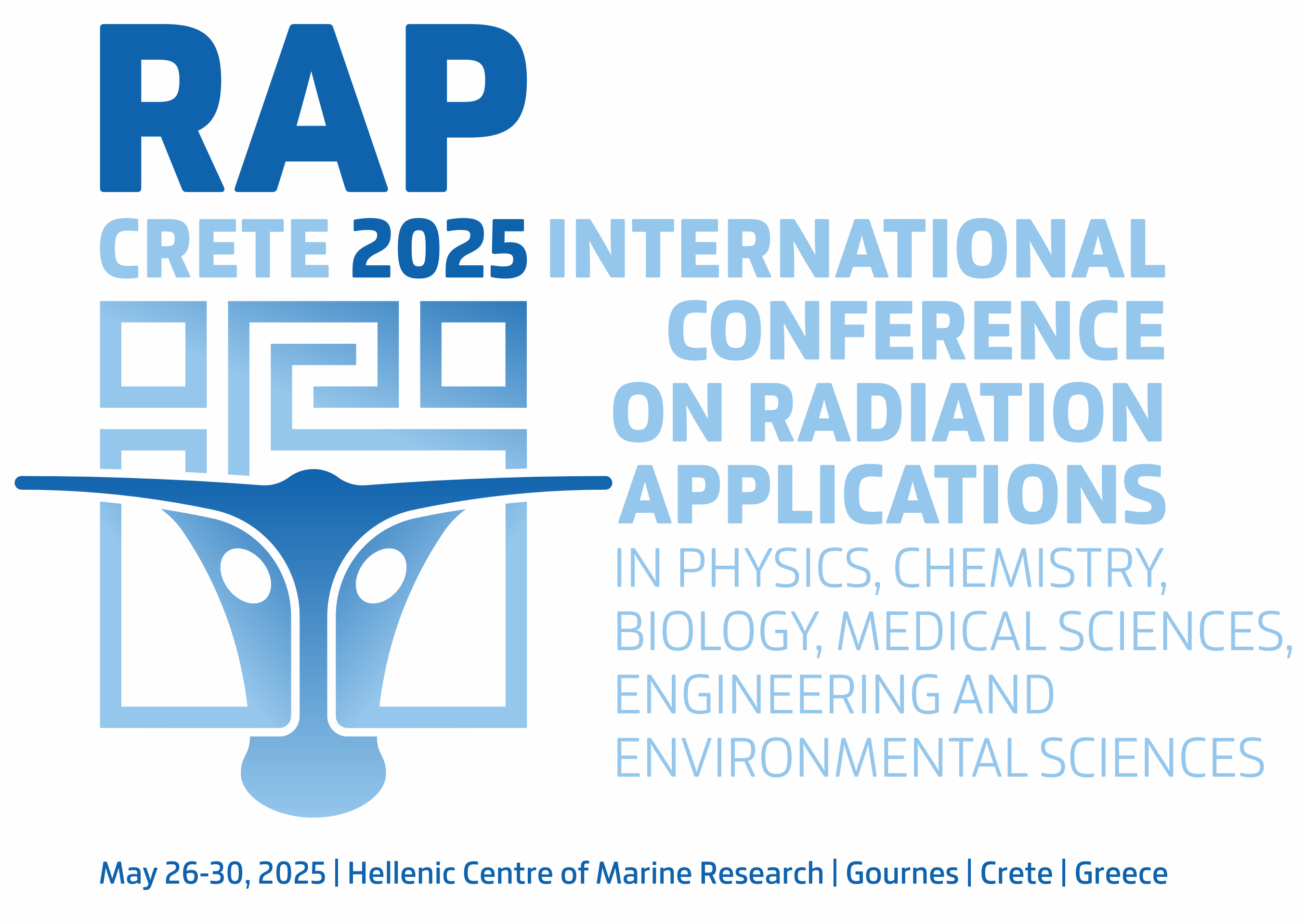Vol. 9, 2024
Radiation Effects Analysis and Fault-Tolerant Design for Space Applications
MACHINE LEARNING MODELS FOR CLASSIFICATION OF SPACE RADIATION
Z. Stamenkovic, S. Vairachilai, M. Andjelkovic, S. P. Raja
Pages: 63-69
DOI: 10.37392/RapProc.2024.14
Abstract | References | Full Text (PDF)
The primary aim of this study is to classify space radiation using existing models trained and analysed with a prepared dataset. Leveraging techniques such as Logistic Regression, Decision Tree, Random Forest, and Ensemble methods, the research aims to classify various types of space radiation, including gamma rays and hadrons. The goal is to build a classification prediction system capable of accurately distinguishing between different types of space radiation, facilitating the effective identification and analysis of radiation-induced effects in semiconductor devices. By discriminating between various types of radiation, this study aids in the detection and characterization of radiation-induced effects, crucial for evaluating the reliability and performance of semiconductor devices in space conditions. The outcomes of this research contribute to advancing the understanding of space radiation effects on semiconductor devices and assist in devising mitigation strategies to enhance their resilience in space missions. The study found that Random Forest and XGBoost were the top performers, achieving 99% accuracy in classifying space radiation, and Decision Tree also showed strong results at 98% accuracy.
-
D. Gaggero, M. Valli, “Impact of cosmic-ray physics on dark matter indirect
searches,” Adv. High Energy Phys., vol. 2018, spec. issue, pp. 1 –
23, Dec. 2018.
DOI: 10.1155/2018/3010514 -
T. Xiao et al., “A detector designed for diagnosing single event effect,”
in
Proc. Int. Conf. Radiation Effects of Electronic Devices (ICREED), Beijing, China, 2018, pp. 1 – 2.
DOI: 10.1109/ICREED.2018.8905088 -
P. I. Vaz, G. I. Wirth, F. F. Vidor, T. H. Both, “TID effects on I–V
characteristics of bulk CMOS STD and ELT-based devices in 600 nm,”
Microelectron. J., vol. 97, 104722, Mar. 2020.
DOI: 10.1016/j.mejo.2020.104722 -
B. Liang et al., “Total ionizing dose effect modelling method for CMOS
digital-integrated circuit,” Nucl. Sci. Tech., vol. 35, 26, Feb.
2024.
DOI: 10.1007/s41365-024-01378-5 -
F. Faccio et al., “TID and displacement damage effects in vertical and
lateral power MOSFETs for integrated DC-DC converters,”
IEEE Trans. Nucl. Sci., vol. 57, no. 4, pp. 1790 – 1797, Aug. 2010.
DOI: 10.1109/TNS.2010.2049584 -
D. K. Nichols, “A review of dose rate dependent effects of total ionizing
dose (TID) irradiations,” IEEE Trans. Nucl. Sci., vol. 27, no. 2,
pp. 1016 – 1024, Apr. 1980.
DOI: 10.1109/TNS.1980.4330968 -
J. Jiang et al., “Total ionizing dose (TID) effects on finger transistors
in a 65 nm CMOS process,” in Proc.
IEEE Int. Symp. Circuits and Systems (ISCAS), Montreal (QC), Canada, 2016, pp. 5 – 8.
DOI: 10.1109/ISCAS.2016.7527156 -
M. Marcisovska et al., “A comparative study of the TID radiation effects on
ASICs manufactured in 180 nm commercial technologies,”
J. Instrum., vol. 13, no. 12, C12003, Dec. 2018.
DOI: 10.1088/1748-0221/13/12/C12003 -
F. Yuan et al., “Total ionizing dose (TID) effects of ray radiation on
switching behaviours of Ag/AlOx/Pt RRAM device,”
Nanoscale Res. Lett., vol. 9, 452, Aug. 2014.
DOI: 10.1186/1556-276X-9-452 -
S. Bala, R. Kumar, A. Kumar, “Total ionization dose (TID) effects on 2D MOS
devices,” Trans. Electr. Electron. Mater., vol. 22, no. 6, pp. 1 –
9, Feb. 2021.
DOI: 10.1007/s42341-020-00255-3 -
L. E. Seixas et al., “Minimizing the TID effects due to gamma rays by using
diamond layout for MOSFETs,” J. Mater. Sci.: Mater. Electron.,
vol. 30, pp. 4339 – 4351, Mar. 2019.
DOI: 10.1007/s10854-019-00747-w -
F. Rinaldi et al., “Non-terrestrial networks in 5G and beyond: A survey,”
IEEE Access, vol. 8, pp. 165178 – 165200, Sep. 2020.
DOI: 10.1109/ACCESS.2020.3022981 -
R. K. Bock et al., “Methods for multidimensional event classification: A
case study using images from a Cherenkov gamma-ray telescope,”
Nucl. Instrum. Methods Phys. Res. Sec. A, vol. 516, no. 2 – 3,
pp. 511 – 528, Jan. 2004.
DOI: 10.1016/j.nima.2003.08.157 -
A. Pagliaro, G. Cusumano, A. La Barbera,
V. La Parola, S. Lombardi, “Application of machine learning ensemble methods
to ASTRI mini-array Cherenkov event reconstruction,” Appl. Sci.,
vol. 13, no. 14, 8172, Jul. 2023.
DOI: 10.3390/app13148172 -
S. Scuderi et al., “The ASTRI mini-array of Cherenkov telescopes at the
Observatorio del Teide,” J. High Energy Astrophys.,vol. 35, pp.
52 – 68, Aug. 2022.
DOI: 10.1016/j.jheap.2022.05.001 -
F. Arneodo, A. Di Giovanni, P. Marpu, “A review of requirements for gamma
radiation detection in space using CubeSats,” Appl. Sci., vol.
11, no. 6, 2659,
Mar. 2021.
DOI: 10.3390/app11062659 -
M. Sharma, J. Nayak, M. K. Koul, S. Bose, A. Mitra, “Gamma/hadron
segregation for a ground-based imaging atmospheric Cherenkov telescope
using machine learning methods: Random forest leads,”
Res. Astron. Astrophys., vol. 14, no. 11, pp. 1491 – 1503, Nov. 2014.
DOI: 10.1088/1674-4527/14/11/012 -
D. Horns, A. Jacholkowska, “Gamma rays as probes of the universe,”
Comp. Rendus Phys., vol. 17, no. 6, pp. 632 – 648, Jun.-Jul. 2016.
DOI: 10.1016/j.crhy.2016.04.006 -
R. Bock, MAGIC Gamma Telescope, UCI Machine Learning Repository,
Irvine (CA), USA, 2004.
DOI: 10.24432/C52C8B. -
F. Pedregosa et al., “Scikit-learn: Machine Learning in Python”,
J. Mach. Learn. Res., vol. 12, pp. 2825 – 2830, Oct. 2011.
Retrieved from: https://www.jmlr.org/papers/volume12/pedregosa11a/pedregosa11a.pdf
Retrieved on: Mar. 12, 2024 -
J. D. Hunter, “Matplotlib: A 2D Graphics Environment”,
Comput. Sci. Eng., vol. 9, no. 3,
pp. 90 – 95, May-Jun. 2007.
DOI: 10.1109/MCSE.2007.55 -
S. Van der Walt, S. C. Colbert, G. Varoquaux, “The NumPy Array: A Structure
for Efficient Numerical Computation,” Comput. Sci. Eng., vol. 13,
no. 2, pp. 22 – 30, Mar.-Apr. 2011.
DOI: 10.1109/MCSE.2011.37 -
X.-W. Chen, X. Lin, “Big data deep learning: Challenges and perspectives,”
IEEE Access, vol. 2, pp. 514 – 525, May 2014.
DOI: 10.1109/ACCESS.2014.2325029 -
D.-E. Choe, H.-C. Kim, M.-H. Kim, “Sequence-based modelling of deep
learning with LSTM and GRU networks for structural damage detection of
floating offshore wind turbine blades,” Renew. Energy, vol. 174,
pp. 218 – 235, Aug. 2021.
DOI: 10.1016/j.renene.2021.04.025


